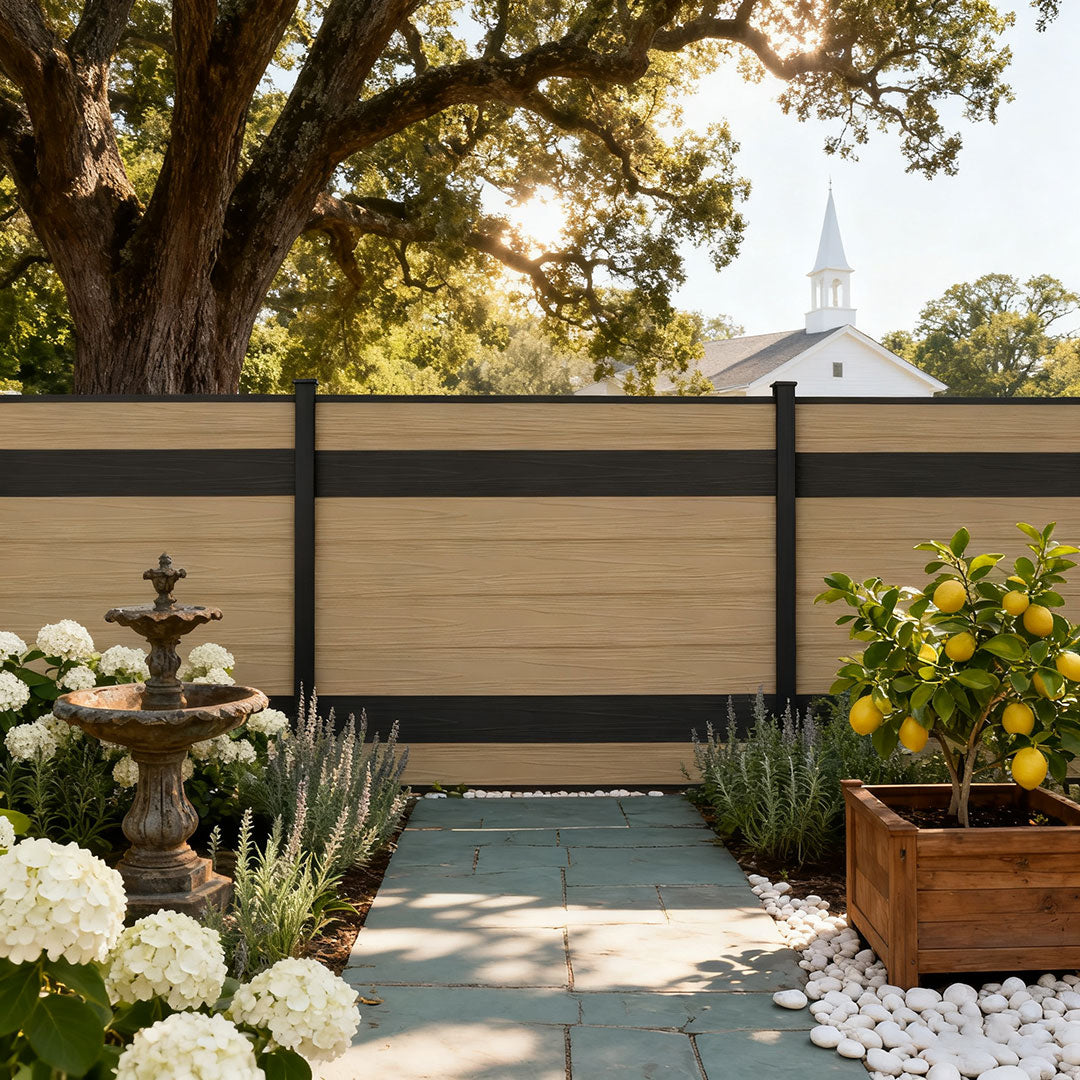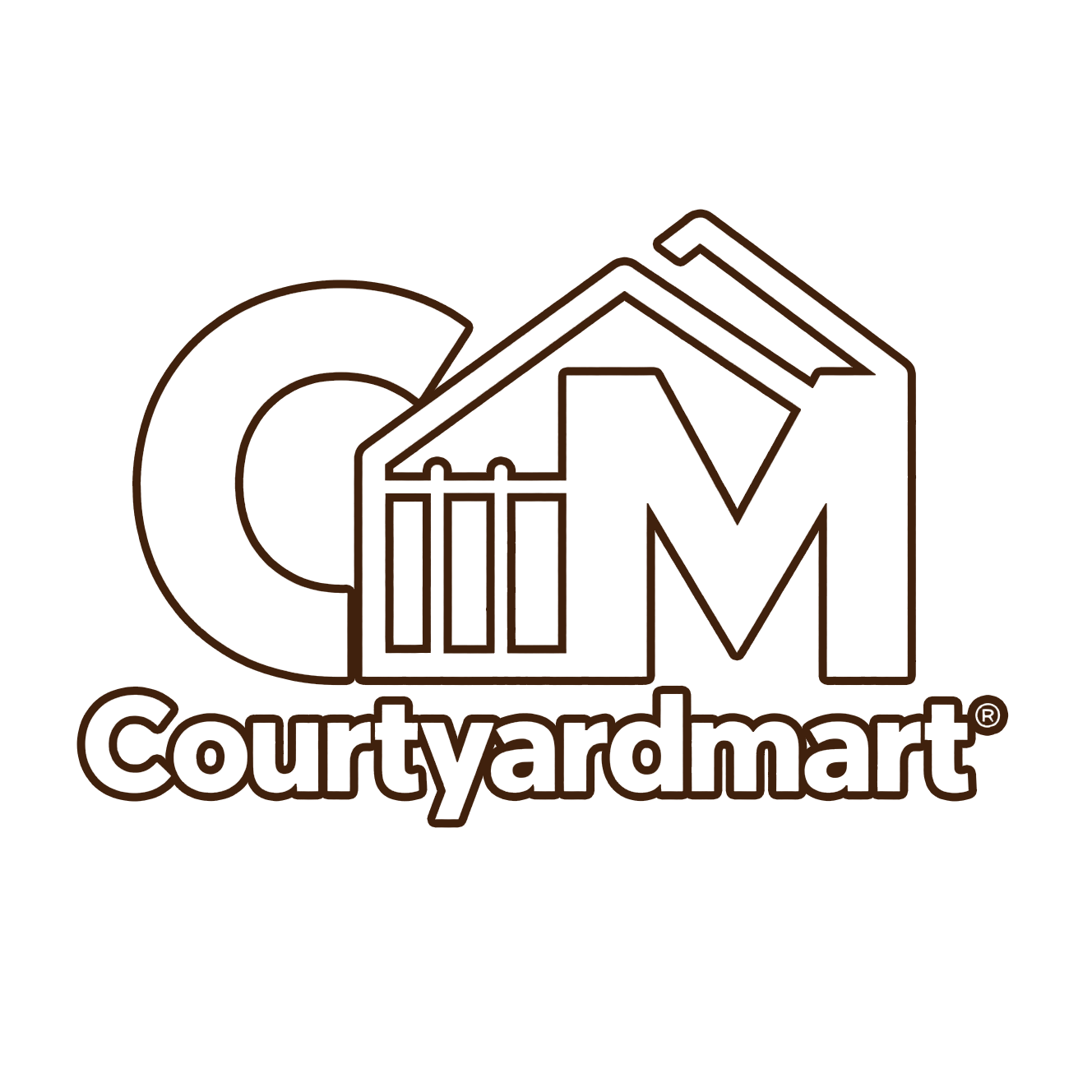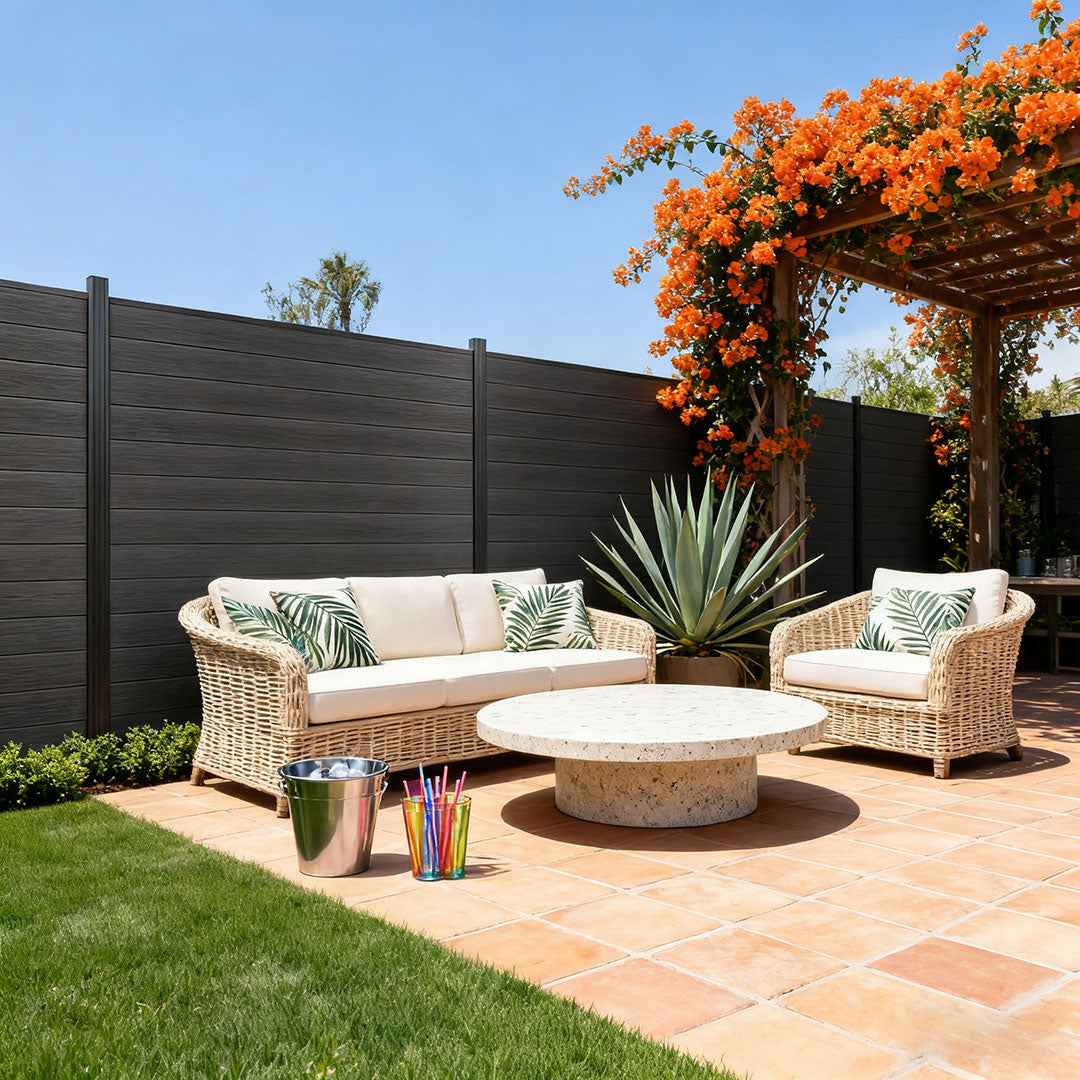
Privacy Fence Cost: Material Comparison & Pricing Guide
Comparing Privacy Fence Materials and Costs
Privacy fences are a popular choice for homeowners seeking security and seclusion. They enhance the aesthetic appeal of a property while providing a sense of privacy.
Choosing the right material for your privacy fence is crucial. It affects not only the look but also the cost and maintenance.
Wood, vinyl, metal, and composite are common materials used for privacy fences. Each has its own set of advantages and drawbacks.
Understanding the costs associated with each material is essential. It helps in making an informed decision that fits your budget.
The cost of a privacy fence can vary widely. Factors such as material, height, and installation complexity play a significant role.
Installation costs can add significantly to the overall expense. Deciding between DIY and professional installation is another important consideration.
This guide will explore the different materials and their costs. It aims to help you choose the best privacy fence for your needs.
By the end, you'll have a clear understanding of privacy fence costs and options.
Why Install a Privacy Fence?
A privacy fence offers numerous benefits that enhance both lifestyle and property value. The primary advantage is increased privacy from neighbors and passersby. This sense of seclusion allows homeowners to enjoy their outdoor spaces without prying eyes.
Additionally, privacy fences serve as a strong deterrent against trespassers, enhancing security. They create a defined boundary for properties, keeping children and pets safely contained within the yard.
Here are some key reasons to install a privacy fence:
- Enhances security and privacy
- Increases property value and curb appeal
- Reduces noise from busy streets
- Provides windbreak and can serve as a noise barrier
- Offers a backdrop for landscaping and garden spaces
Fences can also add to the visual charm of a property. With various materials and designs available, they can be tailored to match any home's aesthetic. Overall, a well-constructed privacy fence is a valuable investment.

Key Factors That Affect Privacy Fence Cost
The cost of a privacy fence can vary widely due to several factors. Understanding these can help you budget more effectively.
Material Choice: The type of material significantly impacts cost. Wood, vinyl, metal, and composite each have different price ranges. Wood is often cheaper initially but requires regular upkeep.
Fence Height and Length: Taller and longer fences naturally cost more due to additional materials needed. Most privacy fences stand between 6-8 feet tall.
Installation Complexity: Terrain plays a crucial role. Sloped or rocky areas make installation harder, increasing labor costs. If the area needs clearing, costs rise further.
Location: Local factors, like zoning laws and permits, add to the expense. Urban areas may have higher labor costs than rural regions.
Design and Features: Extra elements like gates, decorative touches, or custom designs elevate expenses. A simple solid fence will cost less than one with ornate features.
Key considerations include:
- Material type and quality
- Fence dimensions
- Terrain challenges and prep work
- Local zoning requirements
- Custom features and designs
Budgeting for a fence involves more than just the per-foot price. It's essential to evaluate all these factors for a full cost picture. By understanding these elements, you can make an informed decision suited to both your needs and financial constraints.

Privacy Fence Materials: Types, Pros, Cons, and Costs
Privacy fences come in several materials, each offering distinct benefits and drawbacks. The material you select affects cost, upkeep, and longevity.
Wood is a classic choice, favored for its natural appearance and affordability. However, it demands regular maintenance to combat the elements.
Vinyl offers a sleek, clean look with low maintenance needs. It's more expensive initially but saves money over time with its durability.
Metal options like aluminum, steel, and wrought iron provide strength and security. Composite materials blend wood fibers with plastic, achieving longevity with a natural look.
Each material brings unique features to the table, impacting your overall investment and satisfaction.
Wood Privacy Fences
Wooden fences have been a staple for many homeowners seeking privacy. They offer a natural aesthetic that blends well with many landscapes.
Cedar and pine are common choices, appreciated for their availability and cost-effectiveness. Cedar resists insects and decay naturally, making it a preferred option.
Wood fences generally cost between $12 to $30 per linear foot. The price varies based on wood type and fence design.
However, wood requires regular care, such as staining or sealing, to extend its lifespan. Without maintenance, wood can warp, rot, or become insect-infested over time.
Advantages of wood fences include:
- Natural beauty and versatility
- Affordability and wide availability
- Easy customization and repair
Disadvantages to consider are:
- High maintenance requirements
- Vulnerability to weather and pests
- Shorter lifespan compared to other materials
Wood fences typically last 10-15 years with proper care. Despite the maintenance, their charm and cost appeal to many homeowners.

Vinyl Privacy Fences
Vinyl fences have become increasingly popular due to their low-maintenance nature and long-term durability. They provide a clean and uniform look, often available in various colors and styles.
Initially, vinyl fences cost more, often ranging from $20 to $40 per linear foot. Despite the higher upfront investment, their longevity makes them cost-effective.
Vinyl resists moisture, insects, and rot, requiring little more than occasional cleaning. This makes them an attractive choice for busy homeowners.
Key benefits of vinyl fences include:
- Minimal maintenance and cleaning
- Longevity and resistance to weather damage
- Variety of style and color options
Drawbacks, however, are:
- Higher initial cost
- Potential for cracking in extreme temperatures
- Less natural look compared to wood
Vinyl fences typically last 20-30 years, making them a worthwhile investment for many. They suit homeowners looking for durability and minimal upkeep.

Metal Privacy Fences (Aluminum, Steel, Wrought Iron)
Metal fences are known for their strength and longevity. They provide a formidable barrier, though they often come at a higher price point.
Aluminum is rust-resistant and relatively lightweight, while steel is heavier and more secure. Wrought iron offers a classic, ornate look.
These fences can cost between $15 to $45 per linear foot, depending on the metal used. Wrought iron is typically the most expensive due to its decorative nature.
Their advantages include:
- Exceptional durability and strength
- Low maintenance, especially for aluminum
- High security provided by steel and iron
On the downside:
- Higher cost compared to wood or vinyl
- Less privacy unless paired with panels
- Potential for rust if not properly coated
Metal fences excel in longevity, often lasting several decades with proper care. They suit those prioritizing security and durability.

Composite Privacy Fences
Composite fences combine wood fibers with plastic, offering the look of wood with improved durability. They are an eco-friendly option, often made from recycled materials.
These fences range from $25 to $55 per linear foot. While pricier than wood, their low maintenance costs make them appealing.
Composite resists the issues of traditional wood fences, like rotting, warping, or insect damage. They require little upkeep beyond cleaning.
The strengths of composite fences include:
- Durability and long lifespan
- Minimal maintenance needs
- Variety of textures and finishes
Cons to consider are:
- Higher initial cost
- Heavier material requiring sturdy installation
- Limited color options compared to vinyl
Composite fences can last 20-30 years, making them a smart choice for those prioritizing sustainability and low upkeep.

Other Fence Types (Chain Link, Bamboo, Living Fences)
Aside from traditional options, less conventional fences offer unique features and aesthetics. Chain link, bamboo, and living fences each bring different advantages.
Chain link is affordable, costing less than other materials but offers little privacy without modifications. They're durable and low maintenance.
Bamboo provides a natural, exotic look. It's eco-friendly but less durable than other materials.
Living fences, formed with hedges or trees, enhance privacy naturally. They take time to establish and require regular pruning.
Consider these points when evaluating alternative fence types:
- Chain link: Economical and durable
- Bamboo: Natural appeal, moderate maintenance
- Living fences: Eco-friendly and aesthetic, require time
These alternatives can complement traditional options, catering to various needs and design preferences.

Comparing Privacy Fence Costs by Material
When evaluating privacy fences, cost is a crucial factor. Each material offers unique pricing, impacting your overall budget.
Wooden fences are the most economical, generally priced between $12 to $30 per linear foot. They are accessible and customizable.
Vinyl, on the other hand, costs more initially, ranging from $20 to $40 per linear foot. However, its longevity can justify the price.
Metal fences, such as aluminum and steel, vary widely, typically falling between $15 to $45 per linear foot. The exact cost depends on the specific metal and design.
Composite fences are pricier, often ranging from $25 to $55 per linear foot. They offer durability and low maintenance, providing value over time.
Cost Summary:
- Wood: $12 - $30 per foot
- Vinyl: $20 - $40 per foot
- Metal: $15 - $45 per foot
- Composite: $25 - $55 per foot
Choosing the right material involves weighing these costs against factors like maintenance and lifespan.

Fence Installation Costs: DIY vs. Professional
Installing a fence involves more than just material costs. Consider who will perform the installation—DIY or hire a pro.
Taking the DIY route can save money. You'll avoid labor fees, typically $5 to $15 per linear foot. However, it requires time, skill, and the right tools.
Professional installation ensures quality work. It often includes guarantees or warranties, providing peace of mind against future issues.
Weigh your personal expertise against potential savings. In some cases, the initial cost savings of DIY could lead to more expenses if errors occur.
Pros and Cons:
-
DIY Installation:
- Lower initial cost
- Requires skills and tools
- Time-consuming
-
Professional Installation:
- Higher upfront cost
- Quality assurance
- Time-efficient
For those lacking installation experience, professional help might be wise. Hiring experts can prevent complications, ensuring a well-built, durable fence.

Additional Cost Factors: Gates, Terrain, Permits, and More
When installing a privacy fence, consider various cost influencers beyond material and labor. Gates, terrain, and permits can greatly impact the final expense.
Adding gates can enhance both functionality and cost. A single gate might add $200 to $500, depending on its material and complexity.
The terrain of your property plays a significant role. Sloped or uneven ground may require additional preparation, increasing installation costs.
Permits can’t be overlooked. Some areas mandate a permit before installation, adding to both cost and timeline. Check with local authorities to avoid penalties.
Key Additional Costs:
-
Gates:
- Adds to functionality and cost
- Varies by material and design
-
Terrain Preparation:
- More if on a slope
- May need leveling or grading
-
Permits:
- Required in some locations
- Check local zoning laws
Evaluate these factors carefully when budgeting for your fence project. Doing so ensures no unexpected expenses arise, helping maintain your budget.

Privacy Fence Cost Per Foot and for the Whole Yard
Understanding the cost per foot for privacy fences is essential for budgeting. The price varies significantly based on materials and installation methods.
On average, wood privacy fences cost between $12 and $30 per linear foot. Vinyl fences usually range from $20 to $40 per foot, while metal options like aluminum or steel vary from $15 to $45 per foot. Composite fences tend to be the most expensive, costing approximately $25 to $55 per foot.
When estimating the overall cost for fencing an entire yard, multiply the cost per foot by the total linear footage required. For example, a 150-foot perimeter with wood fencing could range from $1,800 to $4,500.
Estimated Costs per Foot:
- Wood: $12 - $30
- Vinyl: $20 - $40
- Metal: $15 - $45
- Composite: $25 - $55
Pricing your project helps in aligning with your budget. Remember, installation, permits, and other added features like gates will further contribute to the total expense.

Maintenance and Long-Term Costs by Material
Maintaining your fence is crucial for longevity and performance. Different materials come with unique upkeep requirements and costs.
Wood fences require regular treatments to prevent rot and insect damage. This maintenance involves staining or sealing every couple of years, adding to long-term expenses. Vinyl fences, on the other hand, require minimal maintenance, primarily needing occasional cleaning with soap and water.
Metal fences, such as aluminum, are durable but may require rust prevention measures, especially in humid areas. Composite fences, which combine wood fibers and plastic, are low-maintenance but might need periodic cleaning.
Maintenance Costs Overview:
- Wood: High (staining/sealing)
- Vinyl: Low (occasional cleaning)
- Metal: Moderate (rust prevention)
- Composite: Low (cleaning)
Considering maintenance can influence your material choice, as regular upkeep impacts long-term costs. Opting for low-maintenance materials can lead to savings over time, both in effort and money. A well-maintained fence can significantly extend its lifespan, ensuring continued protection and privacy.

How to Save Money on Your Privacy Fence Project
Installing a privacy fence doesn't have to break the bank. There are several strategies you can employ to manage costs effectively.
Firstly, consider gathering multiple quotes from contractors. This enables you to compare prices and choose the most cost-effective option. Secondly, opting for a more affordable material can significantly reduce costs without sacrificing quality.
Money-Saving Tips:
- DIY Installation: Save on labor costs if you have the skills.
- Buy in Bulk: Discounts often apply for larger purchases.
- Plan Ahead: Take advantage of seasonal sales or promotions.
Additionally, carefully planning your project can help avoid unexpected expenses. Consider potential long-term maintenance costs when choosing materials. Keep an eye on special deals offered by suppliers and contractors, which can provide significant savings.

Frequently Asked Questions About Privacy Fence Pricing
When considering a privacy fence, many questions arise about costs and installation. Having clear answers helps in making informed decisions.
A common question is, "How much does a privacy fence cost per foot?" On average, it ranges from $12 to $55, depending on the material. Another frequent inquiry is about installation options: "Should I choose DIY or professional installation?" While DIY can save on labor, professional services ensure a quality finish.
Common Questions:
- How long does installation take? Usually 1-3 days.
- Are there ongoing costs? Yes, especially maintenance.
- What impacts cost the most? Material and length.
Understanding these elements can make your project smoother and more affordable. Always consider your specific needs and consult professionals when needed.
Conclusion: Choosing the Best Privacy Fence for Your Budget
Selecting the right privacy fence means balancing cost, functionality, and style. Consider your budget carefully alongside your long-term needs.
Evaluate the types of materials available, as each offers distinct benefits and challenges. Wood provides a classic look, while vinyl and composite offer low maintenance and durability.
Consider installation options, factoring in time and expertise needed. Always check for permits and regulations. By weighing all these aspects, you can choose the most cost-effective and suitable privacy fence for your property. An informed choice will enhance your home's value and aesthetics.



Leave a comment
This site is protected by hCaptcha and the hCaptcha Privacy Policy and Terms of Service apply.